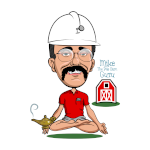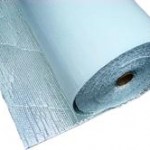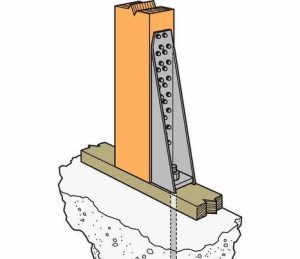Inside Foam Closure Strips to be exact.
There are lots of little pieces involved when it comes to the assembly of a pole building, which the average lay person would have little or no knowledge of. Some of them don’t make a difference until the lack of them (or their failure to perform) becomes apparent.
 One of these unsung heroes is the “Inside Foam Closure Strip”.
One of these unsung heroes is the “Inside Foam Closure Strip”.
What the H are Inside Foam Closure Strips, and why would a new building owner care?
Imagine you are inside of your brand new steel roofed pole building, enjoying the wonderful space. Along the eave (where water drips off when it rains) side, are the underside of the high-ribs of the steel roofing. In most cases, every nine inches is a rib about ¾ of an inch high….and unless this space is filled with something, it is an entry point for outside light (no big deal, in most cases), as well as obnoxious flying things – like hornets and wasps (much bigger deal).
Having inside foam closure strips installed along the eave sides of the roof steel can be the difference between a happy or unhappy pole building owner. What is even sadder for the building owner without them is, they are very economical.
Not just any foam strip will perform admirably for years. There are providers who will supply (as well as builders who will install) open cell foam instead of investing in a true inside closure. Open cell foam typically comes in rolls of 10 to 25 feet in length, and easily compresses to conform to the rib pattern of the steel. It also is not UV resistant – resulting in deterioration and a very short lifespan.
Hansen Pole Buildings has done the research and found what we feel is “the product” when it comes to Inside Foam Closure strips. Manufactured by Marco Industries™, the closure foam is hydraulically die-cut for a precise fit. The use of crosslink polyethylene foam with a unique coating provides a better UV resistance and better durability than the industry standard. Independent testing confirms Marco’s 1.5 density foam provides a better UV stability than the competitive products with a 2.0 density. What does this mean to the average consumer? The Marco Industries Closure-Foam™ is UV resistant and designed to last 40 years or more!
During the installation of the steel roofing on Eric’s new post frame storage building, one of my son’s jobs was to have the inside foam closure strips placed ahead of the next sheet of roof steel. Each three foot wide closure strip has a dove tail on the end, which interlocks with the previous strip. The interlocking occurs beneath a high rib of steel, which means the strips need to be placed “ahead of the game”.
One of the challenges is – the strips must be accurately placed to cover only three feet. They will stretch, if pulled, so one must be acutely aware of the need to be laying them out using a tape measure.
Why acutely aware?
Marco’s Closure-Foam is designed to stay put. A generous ¼” adhesive bead of M63™ industrial adhesive on each strip eliminates blow away problems. The adhesive will even adhere in subfreezing temperatures and on wet surfaces!
In constructing our own self-storage building, we found the adhesive to be so good – if the closure was not originally placed correctly, it was a true task to remove and reseat it properly!










Question. So you rip off the old shingles, lay ice shield 5ft up at roof ends, and tar paper with 30 weight. You install metal roof with inside and outside closures as directed. Metal roof is secure and water tight. At some point in time you develope a leak half way up the roof. The water runs down the tar paper to end of roof but where does it go? Does it get trapped behind the waterproof inside closure?
In your scenario, yes – the water will be trapped above the inside closure. However a properly installed metal roof just does not develop a leak over time.
We recently had a steel roof installed over a new build a wrap around PORCH. Within a couple days we noticed a bunch of the foam black strips laying on the ground and roof. Also is it common practice to cut the steel by hand with tin snips?
Not feeling really confident about this Job. But our contractor thinks it will be fine???? What’s your take on this?
There will be places where steel will need to be cut, especially if you have a wrap around porch with a hip. The cutting can be done with tin snips, a nibbler, or a plethora of other reasonably acceptable ways – HOWEVER all non-factory cut edges should be covered by steel trims. There should never be a field cut edge exposed to the weather. My educated guess is those black foam strips are supposed to be installed and someone did not do there part on the jobsite.
Your contractor may be the exception – the majority of contractors did not graduate from high school and there are cases where rather important things (like foam closures) get omitted. You might want to ask the company who manufactured the steel to do a field visit to make a determination as to if the installation has been properly done and if indeed those closure strips should be installed.